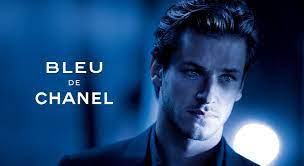The creator of masterpieces
Madame Rochas,
Amouage Gold &
Gold for Men,
Dioressence, Calèche and the original 1955
Doblis by Hermès is no more:
Perfumer Guy Robert died on Monday 28th May. His mantra:
Un parfum doit avant tout sent bon (a perfume should first and foremost smell good).
One small anecdote (and some perfume quotes I will address below) shows us how historical memory is fleeting when it comes to perfumes and perfumers' work. Despite Robert's amazing and historically important work, not everything is recorded and much of what passed behind closed doors has escaped the written word. Like Robert's unknown perfume called
Chouda...

Guy Leyssène, who met Madame Grès at a dinner part two years prior to
Cabochard's launch, suggested that
she should issue a perfume because it was a profitable enterprise which all
the other fashion designers of the times had embarked on. The perfume that was in works was a composition by legendary perfumer Guy Robert, called
Chouda.
Then young Robert ~under the guidance of mentor Andrée Castanié, then
editor of L'Officiel de la Mode et de la Couture~ had been introduced
to Mme Grès in 1956. But it took a trip to India, the land of exoticism,
which prompted Alix Grès to further her plans on the house’s fragrance.
The visit had begun innocuously, invited by the Ford Foundation to
assess Indian brocades. It was there that Alix Grès discovered water
hyacinth: a flower she became enraptured with. It has a sweet odour,
rich like tuberose, yet with a fresher top and slightly warmer. The
experimentation of Guy Robert yeilded rich fruits: Alix loved it,
however
Chouda was almost exclusively used by her (only five litres of
Chouda were
ever made) as it was too flowery for the tastes of the 50s which veered
towards classic chypres. She launched another fragrance under the
pressure of public input: the mod of what was to become
Cabochard, made by
Bernand Chant of IFF, was received much more favourably and thus the plan to push
Chouda was
ultimately abandoned, although the two were issued almost
simultaneously in 1959. It comes as a surprise that there were focus
groups even back then, but it is a fact that puts things into
perspective: public reception is (and will always be) the moniker of how
things work in a sector that, although hinges on art, is also largely a
business.
According to Luca Turin, as quoted by Chandler Burr: "I got to know Guy Robert particularly well. He's a professional-level
jazz pianist, writes fiction, is a terrific cook. You should hear
him talking about olive oil. He knows the only place to get it.
He took me to one of the best restaurants I've ever been to, Le
Bistro le Paradou, west of Aix. He's in his seventies now. He's
been in the business a long time, has bad relations with Jean Amic,
the old head of Givaudan. It's a small world, Grasse. Everyone's
screwed everyone else at some point, literally and figuratively."
Guy Robert's wit and realism were unparalleled. He said of
Piguet's Bandit scent: "A beautiful, but brutal perfume." And on Ernest Daltroff of Caron, lamenting current state of affairs in perfumery: "Today, when copycats make money, and perfumers are discouraged by lawyers and toxicologists from using some of nature's most fascinating products, Daltroff's creations are a reminder of what true perfumery is all about. He devoted his unique taste and sense of balance to a quest for fragrance perfection." [quotes via Michael Edwards,
Perfume Legends]
And on composing:
“We are like painters: some use simple colors, others prefer sophisticated ones. It's the result that matters” [quote Guy Robert, Les Sens du Parfum]
Guy Robert belongs to a clan of perfumers as is typical with classic French noses; nephew of Henri Robert, the second perfumer after Beaux at Chanel and famously the nose behind Coty's
Muguet de Bois,
Chanel pour Monsieur, Chanel No. 19 and
Cristalle, while Guy's own son is François Robert
who worked on Lanvin
Vetyver and the newer
Les Parfums de Rosine scents. Between 1949 and his death he worked for six different fragrance houses (Hermès, Rochas, Dior, Gucci,
Amouage and The Pink Room), learning
perfumery, creating perfume and then supervising groups of perfumers.
In 1961, at the prompting of Jean-René Guerrand (son-in-law of Émile
Hermès and founder of the fragrances branch), the perfumer Guy Robert composed
Calèche, a masterpiece which instantly transformed Hermès into one
of the major players of modern perfumery. Nine years later, moreover, he
would be the author of
Équipage, the House's first fragrance for men and arguably one of the most graceful to this day. But in the decades of the 1950s, 1960s, 1970s and 1980s he also composed numerous perfumers' bases and accords which have been incorporated into ready-made fragrances credited to other perfumers. He also composed
The Pink Room perfume Parfum No.1 pour toi: "The Pink Room Parfum Number 1 was then created with the wonderful Guy Robert as mentor, guide and friend. It
was an eidetic experience of the textures, colours and ambience of The
Pink room. Having produced Number 1, it became clear to Sarah where her
senses were leading her, in a very niche and special way."
[quote: Sarah Barton-King]
In
his work he served internatioal clients but also involved in the
training of new perfumers. Guy Robert considered '
Amouage Gold' a symphony and the crowning glory of his career.
Robert was not without author's credentials either: His
Les Sens du Parfum (where he lists some of his favorite perfumes, among them the original
Quelques Fleurs, Coty's
Cordon Vert alongside
Coty's Chypre, Ambre Antique, Emeraude, L'Origan and devotes space to the opus of Germaine Cellier) is considered a handbook into appreciating the art of perfumes, while he served as President of
La Société Française des Parfumeurs.
He will be sorely missed. Our condolences to his family.
Guy Robert's known perfume oeuvre comprises, apart from scented products for the body, perfumers' bases and cosmetics:
.jpg)






























